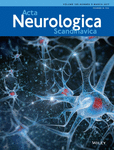Brazilian experience of the influence of endovascular treatment on headache in patients with ruptured intracranial aneurysms
Abstract
Background
The characteristics of primary headaches in patients with ruptured brain aneurysm embolization have not been well understood to date.
Aims of the study
This study was conducted to evaluate the influence of endovascular treatment (EVT) of ruptured intracranial aneurysm (RIA) and the pattern of previous primary headache.
Methods
We evaluated the pattern of headache in patients who suffered a RIA and EVT within one year before the rupture, and prospectively evaluated the characteristics of headache for up to 12 months after EVT. Sixty patients were evaluated and a questionnaire about headache was applied at the time of admission. These patients were contacted 3, 6 and 12 months after treatment to complete the study by filling out follow-up questionnaire on the headache.
Results
Thirty-seven patients had headache before the rupture, 16 with tension-type headache (TTH), 11 with migraine without aura, nine with migraine with aura with and one with non-specific characteristics. There was a significant reduction in the frequency of pain for up to 12 months for patients with TTH (P < 0.001) and migraine without aura (P = 0.012), but there was a reduction in pain intensity over the same period in TTH (P = 0.002), migraine with aura (P = 0.004) and migraine without aura (P < 0.001).
Conclusion
There was a reduction of the primary headache after endovascular treatment of ruptured brain aneurysm.




